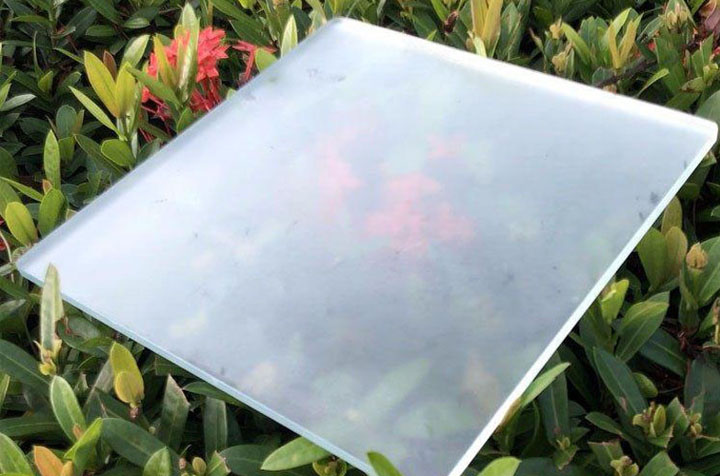Understanding Tinted Glass Definition, Types, and Applications
Tinted glass is a popular architectural and decorative element that serves both aesthetic and functional purposes. This type of glass has been treated with a special coloration process to alter its transparency, light transmission, and visual appearance. By manipulating the amount of light that passes through while simultaneously reducing glare, tinted glass has become an integral part of modern building designs, automotive applications, and various consumer products.
Understanding Tinted Glass Definition, Types, and Applications
There are several methods used to create tinted glass, each resulting in different characteristics. The most common methods include surface coating, added colored materials during the manufacturing process, and lamination. Surface coatings involve applying a thin film to enhance the glass's ability to block UV rays or reduce glare. The addition of colored materials, typically obtained from metal oxides or other compounds, is incorporated into the glass during production, resulting in a uniform tint and various colors ranging from deep bronze and gray to lighter hues like blue and green.
what is meant by tinted glass
In terms of varieties, tinted glass can be broadly categorized into several types reflective, non-reflective, and gradient. Reflective tinted glass is designed to mirror the exterior environment, providing enhanced privacy while simultaneously reducing heat absorption. Non-reflective tinted glass, on the other hand, offers a more natural lighting experience for indoor spaces, balancing light transmission with glare reduction. Gradient tinted glass features a gradient effect, transitioning between tinted and clear sections, making it a popular choice for stylish architectural designs.
The applications of tinted glass are vast and diverse. In residential and commercial buildings, tinted windows are often utilized not only for their aesthetic appeal but also for their ability to enhance comfort and save energy. Retail stores frequently use tinted glass in their storefronts to provide an appealing look while ensuring products inside are less exposed to sun damage. In the automotive industry, tinted windows offer passengers increased comfort by minimizing glare and excessive heat. Moreover, they also provide a level of privacy for occupants, deterring unwanted attention.
Beyond architecture and automotive applications, tinted glass can be found in various consumer products, such as sunglasses and electronic devices. The demand for tinted lenses in eyewear stems from the need to protect the eyes from harsh sunlight while maintaining visual clarity. In smartphones or tablets, manufacturers may use tinted glass to reduce glare on screens, enhancing user experience.
In conclusion, tinted glass is a versatile and functional material that serves a multitude of purposes. Its ability to control light, enhance aesthetics, and improve energy efficiency makes it an invaluable component in various industries. As technology progresses and demand for sustainable and stylish solutions increases, the prevalence of tinted glass is likely to grow, further solidifying its place in our everyday lives.
 Afrikaans
Afrikaans  Albanian
Albanian  Amharic
Amharic  Arabic
Arabic  Armenian
Armenian  Azerbaijani
Azerbaijani  Basque
Basque  Belarusian
Belarusian  Bengali
Bengali  Bosnian
Bosnian  Bulgarian
Bulgarian  Catalan
Catalan  Cebuano
Cebuano  Corsican
Corsican  Croatian
Croatian  Czech
Czech  Danish
Danish  Dutch
Dutch  English
English  Esperanto
Esperanto  Estonian
Estonian  Finnish
Finnish  French
French  Frisian
Frisian  Galician
Galician  Georgian
Georgian  German
German  Greek
Greek  Gujarati
Gujarati  Haitian Creole
Haitian Creole  hausa
hausa  hawaiian
hawaiian  Hebrew
Hebrew  Hindi
Hindi  Miao
Miao  Hungarian
Hungarian  Icelandic
Icelandic  igbo
igbo  Indonesian
Indonesian  irish
irish  Italian
Italian  Japanese
Japanese  Javanese
Javanese  Kannada
Kannada  kazakh
kazakh  Khmer
Khmer  Rwandese
Rwandese  Korean
Korean  Kurdish
Kurdish  Kyrgyz
Kyrgyz  Lao
Lao  Latin
Latin  Latvian
Latvian  Lithuanian
Lithuanian  Luxembourgish
Luxembourgish  Macedonian
Macedonian  Malgashi
Malgashi  Malay
Malay  Malayalam
Malayalam  Maltese
Maltese  Maori
Maori  Marathi
Marathi  Mongolian
Mongolian  Myanmar
Myanmar  Nepali
Nepali  Norwegian
Norwegian  Norwegian
Norwegian  Occitan
Occitan  Pashto
Pashto  Persian
Persian  Polish
Polish  Portuguese
Portuguese  Punjabi
Punjabi  Romanian
Romanian  Russian
Russian  Samoan
Samoan  Scottish Gaelic
Scottish Gaelic  Serbian
Serbian  Sesotho
Sesotho  Shona
Shona  Sindhi
Sindhi  Sinhala
Sinhala  Slovak
Slovak  Slovenian
Slovenian  Somali
Somali  Spanish
Spanish  Sundanese
Sundanese  Swahili
Swahili  Swedish
Swedish  Tagalog
Tagalog  Tajik
Tajik  Tamil
Tamil  Tatar
Tatar  Telugu
Telugu  Thai
Thai  Turkish
Turkish  Turkmen
Turkmen  Ukrainian
Ukrainian  Urdu
Urdu  Uighur
Uighur  Uzbek
Uzbek  Vietnamese
Vietnamese  Welsh
Welsh  Bantu
Bantu  Yiddish
Yiddish  Yoruba
Yoruba  Zulu
Zulu 

